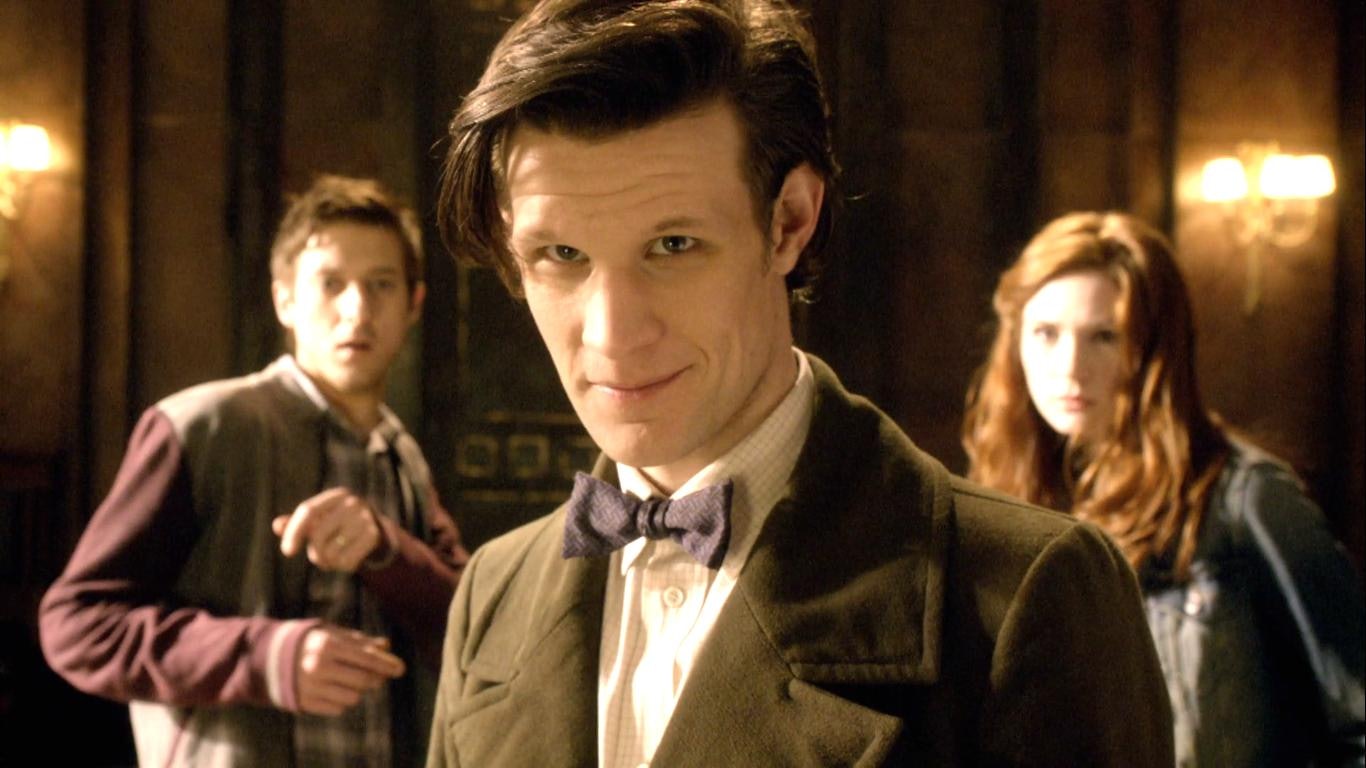
Up until the first half of the Doctor Who revival’s sixth season, showrunner Steven Moffat had done an admirable job of pretending he knew what he was doing. He’d recently ramped up the serialized storytelling with the revival’s first ever two-part premiere, then in the revival’s first-ever mid-season finale he gave us the game-changing reveal that River Song was Amy and Rory’s long-lost child.
Was this the greatest twist in the world? Maybe not, but it was undeniably something that had been planned out since at least the season 6 premiere, and probably as early as “The Eleventh Hour.” The episode ended with not just an emotional, exciting promise from the Doctor that he’d be going on a quest to find Amy and Rory’s child, but with a title card reading, “The Doctor will be back, in LET’S KILL HITLER.” It’s a bold title, one that brings to mind a dramatic WWII spy story, something similar to the ambitious season premiere that set itself around government conspiracies in 1960s America. It’s also a title that immediately drew backlash when the episode aired and Hitler turned out to be a total non-entity. There’s nothing wrong with “taking the mickey out of” Hitler, as Moffat described it on a press tour, but after three months of build-up you can’t just shove him into a cupboard and call it a day.
The intentionally underwhelming payoff to the promise of “Let’s Kill Hitler” represents everything wrong with Moffat’s fixation, at the time, on the mystery box — a TV storytelling method popularized by J.J. Abrams’ LOST, and overused to high hell in the 2010s. Its concept was simple: structure a TV show like a puzzle box, full of labyrinthine twists and questions that would only be answered with more questions. The only problem was that it was fundamentally ill-suited to a long-running show like Doctor Who, and especially ill-suited to an off-the-cuff writer like Moffat.
The serialized nature of a mystery box structure clashed with Moffat’s comic instincts in “Let’s Kill Hitler” in a big way, namely in the introduction of Mels (Nina Toussaint-White), a long-time childhood friend of Amy and Rory who has somehow never been mentioned until now. How has someone this vital, someone important enough that Amy would name her own child after her, never even been mentioned before? It’s because Moffat clearly hadn’t thought of this plot twist before writing the episode. The script itself is pretty blatant about this, writing off Mels’ absence at the Ponds’ wedding by having her flippantly say, “I don’t do weddings.”
This episode’s campy, self-aware comedy schtick doesn’t work when it’s based around an ominous storyline that’s been treated seriously up until now. When the episode reveals that Mels is actually River, the twist once again doesn’t work, because we’d only just met her 15 minutes ago and a ton of other stuff had happened since then. The time paradoxes in Moffat’s other storylines felt meticulously planned out; this one felt like it was improvised on set.
Before this point, Moffat had one of the best track records of any Doctor Who writer. He’d not only written some of the best episodes of the previous showrunner Russell T. Davies’s era, but his debut season as showrunner was one of the strongest and most satisfying seasons we’d ever gotten. His style felt fresh and exciting, and although he always had his share of doubters, it was easy to trust that there was a method to Moffat’s madness.

But while “Let’s Kill Hitler” may not have killed Hitler, it did kill fans’ faith in Moffat’s competence with serialized storytelling, and it also seemed to kill Moffat’s faith in himself. The next season veered sharply in the other direction, abandoning two-parters altogether and embracing an approach even more episodic than Davies’. This was the point where even Moffat seemed to realize he’d trapped himself in a mystery box too complicated to get himself out of, which might be why season 6’s finale (the show’s first ever one-part finale at that point) had such a strong feeling of “let’s get this over with.” Fans would be disappointed with its resolution either way, so maybe it was best to rip the bandaid off quickly.
There were still plenty of fun times ahead for the Moffat era, but Moffat never again tried anything as ambitious as his multi-season arc with River Song and The Silence. After a season and a half of trying to break from the episodic format and embrace the serialized structure that was trendy at the time, “Let’s Kill Hitler” was when the show itself seemed to realize that hey, maybe the mystery box was played out.







